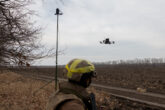December 14, 2021
How the U.S. Can Quickly Build Greater Resiliency in Space
Vice President Harris’s chairmanship of the first National Space Council under the Biden administration earlier this month is a welcome step toward a whole-of-government approach for securing the space domain for the U.S. economy, military and civil society. Such an approach is urgently needed, as the last two months have shown: China conducted a hypersonic glide vehicle test and Russia created thousands of pieces of debris through an anti-satellite missile test.
The enabling policy framework released by the space council directs the Department of Defense to “accelerate its transition to a more resilient national security space posture.” While this direction is welcome in the halls of the Pentagon, the devil is in the details – and there are plenty of them when it comes to manifesting broad policy guidance into architectural solutions that are programmed for DoD and funded by Congress.
China and Russia will continue to pose significant threats to our space systems, from cyber intrusion techniques to kinetic destructive ASAT tests.
As leaders across government work through these details, here are several principles they should embrace.
Speed to development
Speed is a critical element of success in this enterprise. Endowed with a congressional mandate to “go fast” in space acquisition, the Space Force is showing signs of living up to that charge. The Next-Generation Overhead Persistent Infrared missile-warning system just passed a critical design review. The Space Development Agency (SDA) continues to innovate and instantiate new architectural concepts, support new foundational technologies necessary for resilient space architectures as witnessed by their investment in optical intersatellite links, and find ways to work with nontraditional companies making space entries. Meanwhile, the Space Enterprise Consortium known as SpEC OTA continues to grow both in membership and funding profiles to the benefit of Space Systems Command and the space industrial base.
Read the full article from Space News.
More from CNAS
-
Defense / Transatlantic Security
When Defense Becomes Destruction: Austria-Hungary’s Mistake and Ukraine’s RiskThis article was originally posted on War on the Rocks. The southeastern Polish city of Przemyśl, with its elegant 19th century Habsburg-era train station, remains one of the ...
By Franz-Stefan Gady
-
Defense / Transatlantic Security
Ukraine’s Catch-22 MomentThis article was originally published in the Financial Times. In Joseph Heller’s wartime classic, Catch-22, the protagonist Yossarian seeks out the US army surgeon Doc Daneeka...
By Franz-Stefan Gady
-
CNAS Insights | Budgetary Own Goals Undermine “Speed and Volume”
On November 7, Secretary of Defense Pete Hegseth laid out a plan to overhaul the Department of Defense’s (DOD’s) acquisition system. Placing an emphasis on delivering new capa...
By Philip Sheers, Carlton Haelig & Stacie Pettyjohn
-
Drones: Who Is Making the New Weapons of War?
From Ukraine and Russia to Gaza and Sudan, drones have become a key weapon of war. Which companies are making them, and profiting from this rapidly expanding but controversial...
By Stacie Pettyjohn




